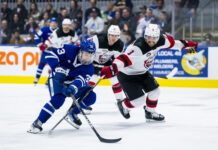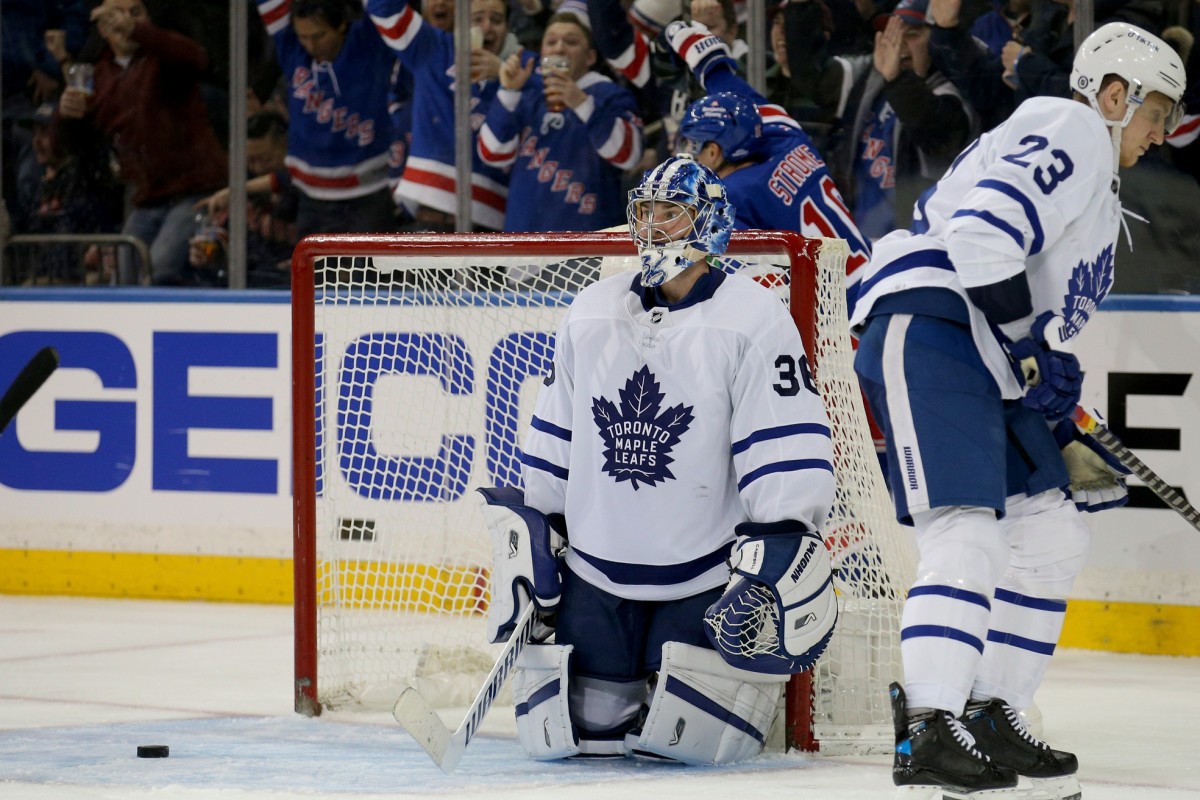The Toronto Maple Leafs’ goaltending has been horrendous recently.
That’s not exactly breaking news, but last Saturday’s cartoonish affair with Detroit highlighted what has been known in Leaf-land for a while: The last five or six weeks have been awful in the crease, a striking comedown for a team that enjoyed such great goaltending for the first two months of the season.
Of course, what happened last Saturday was an odd one that we can’t read too much into. A seven-minute stretch where nearly every shot on net against two different Leafs goalies goes in is not likely to happen again; most of us had never seen anything like it before. But the fact that it doesn’t seem that unusual for this Leafs team as of late is what is understandably striking fear into the hearts of the snakebitten fans in this market.
Goaltending is a full-blown five-alarm fire in Toronto right now, and it’s sent the endless debate over adding a second-pair defenseman vs. a second line winger into confusion with one realization: maybe it’s neither?
Suddenly, the thought of acquiring a goaltender does not seem so crazy, and to some, it’s a must. But is that a prudent idea?
In this piece, I will argue no for two reasons: the two goalies Toronto already has are good bets to perform well over an extended period of time given their track records, and the lackluster goaltending market provides no proven upgrade at a reasonable cost.
Let’s Talk About Jack Campbell
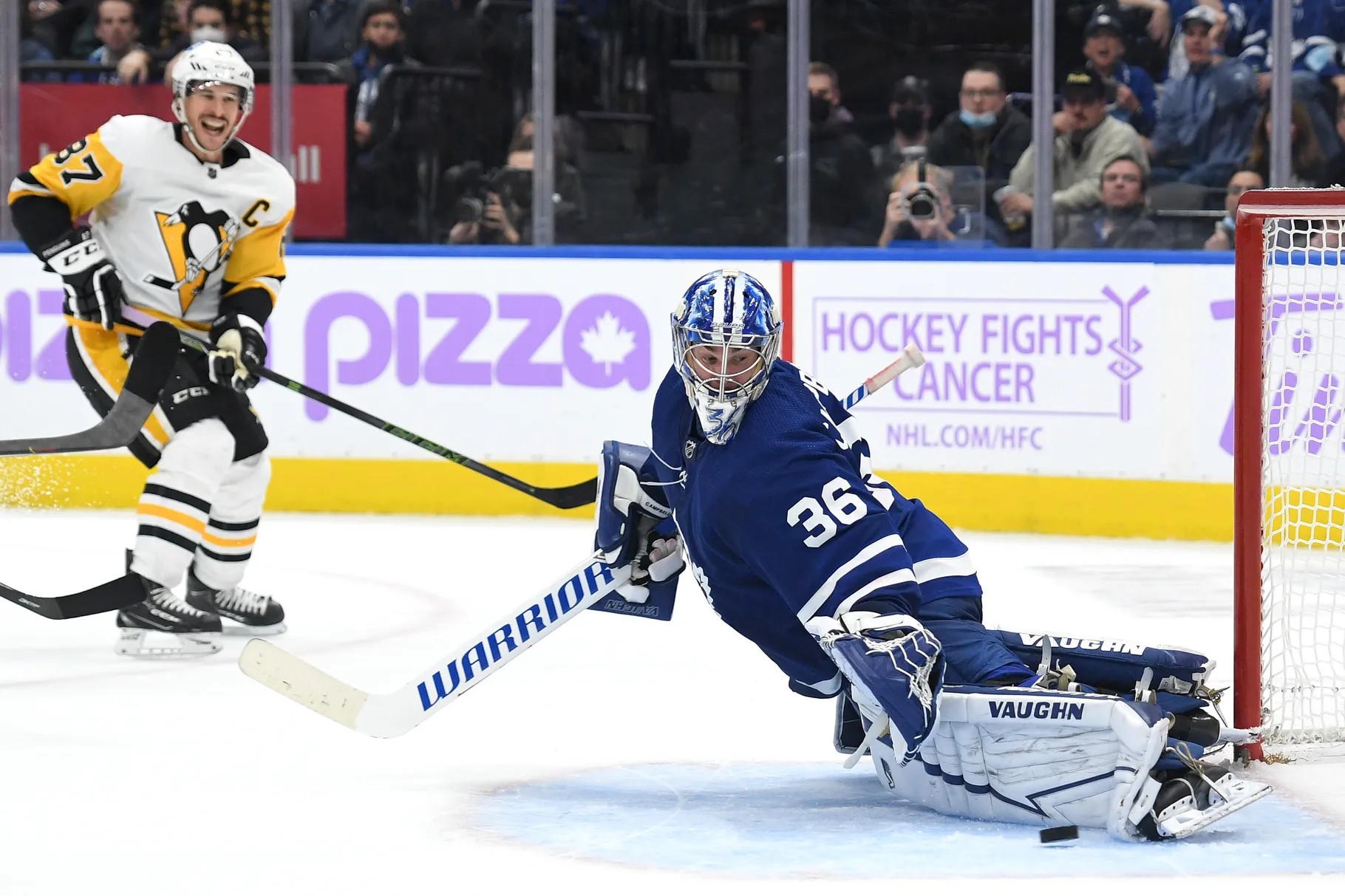
Has anybody in the NHL had a crazier turn of events in the last couple of months than Jack Campbell? Soup went from “how are we gonna afford this guy in the summer?” Vezina candidate to struggling badly in the span of less than two months.
The first 41 games of Campbell’s Maple Leafs career, spanning his trade from LA to the end of the 2021 playoff series against Montreal, were really consistent. He had a .923 save percentage and had saved 7.89 goals above expected. He was an excellent NHL goaltender over that period.
As a result, when he came out of the gate like gangbusters in 2021-22, it wasn’t too surprising. When Campbell was riding a .946 through two months, we knew he’d cool off, but the idea that he was having a career year – going from a career .920 to a .930 guy for one season – isn’t out of the ordinary for a good goalie.
Even when he began to sag in December and early January, it still made some sense (mean reversion, that sort of thing). By January 11, Campbell was still boasting a .935 save percentage (SV%) and by that point had earned his All-Star nod (boasting a +13.81 GSAx). A little more sagging could be expected with further mean reversion, but there’s no way to explain what has happened since January 11 in a rational sense (and I suppose that’s goaltending for you).
Since January 11, Campbell has allowed 39 goals on 297 shots for a .869 SV% and a 3.92 GAA with 15.79 goals saved below expected in just 11 games. He was yanked twice. The only two goalies in the league with a save percentage worse than .875 and seven-plus games played in that span are Jonathan Quick of Los Angeles and Cayden Primeau of Montreal. Really bad.
What’s notable about what has happened to Campbell in that span is that it is not “a cooling-off period.” It’s not merely the mean reversion we knew was coming. That’s what the stretch from December 1-January 11 was. It is a meltdown unlike any other stretch of Jack Campbell’s career.
Campbell is not a goalie with a long NHL track record — it took a long time for him to arrive in the league — but he’s now played 124 career games, plus seven in the playoffs. Out of that, we can build 12 different 11-game stretches, and you will not find anything approaching what Campbell has done in this period.
Case in point? Including the playoffs, seven of the 11 worst games of his NHL career (by GSAx) have come since January 11. The four other worst games are pretty spread out – two in April 2021, one in October 2021, and one back in 2019. When it comes to Campbell’s NHL career, this period is a black swan.
Which feels notable. This isn’t a situation like Edmonton where a bad goalie is showing you who he really is. Mike Smith entered this season coming off a great 2020-21, but he had posted very poor metrics in both of the two years prior to that. There was nothing in Campbell’s career to suggest this sort of thing is who he is.
Even including this meltdown period, Campbell’s career regular-season save percentage is .917 with 5.74 goals saved above expected over 124 games across four seasons. Campbell isn’t a spring chicken, and all of the evidence out there – except this recent stretch – suggests he’s a good NHL goalie.
For me, it’s the nature of this stretch that says a lot. If this were a situation where Campbell was simply struggling, it might creep into our heads that Campbell just isn’t very good. But the fact that it’s been so horrendously bad (saving >2.2 goals below expected in seven of 11 starts!) makes it clear in my mind that this is some sort of mental rut and not part of a larger technical problem with Campbell’s goaltending approach.
Goaltending is a notoriously mental position. You have to be big and freakishly agile/flexible for a human that size, but as much as it is physical, a lot of it is between the ears. Campbell is an emotional player who is known to get down on himself after poor performances, which has endeared himself to Leafs Nation (“at last, a player who likes to self-flagellate the way we do by being fans of this team!”), but I can’t help but wonder if that emotional aspect has hurt him by sending him into a deeper spiral.
I am not a goalie, and I am not an NHL player or coach. I also don’t know Jack Campbell. I can’t say what steps the team should take to try and pull him out of this ditch. But to me, based on the broader sample size, it seems quite clear that this isn’t who Campbell is. If it is, then his career in the league is finished. You can’t trot out a goalie who gives up two more goals than he should in each start on any sort of a regular basis.
But I would put a lot of money on that not happening. The question really is how long it takes for Campbell to get right, and how he can get there. I don’t have the answers, but he is too good of a goalie when he’s his normal self (and at too low of a cost) to not give him as much time as they can to figure it out. The question for me is what Kyle Dubas & co. should do in the meantime.
What’s the deal with Petr Mrazek?

Mrazek’s season has been unusual. He made just three appearances prior to January 12 due to injury. Since settling into more regular use (starting Jan. 12), Mrazek has posted an .894 SV% and -4.62 GSAx over 111 games – not the numbers you’re hoping for, but clearly superior to Campbell’s all-out meltdown mode.
More importantly, Mrazek only has a couple of truly bad efforts (in Montreal last week, and I suppose Buffalo on Wednesday, though there was a lot of bad defense in front of him). Again, compared to Campbell, who has posted just two positive GSAx performances in his last 11 and is throwing up a wretched game every other start, it’s an upgrade.
Therefore, I think Petr Mrazek needs to be the guy in net for at least the next little bit – however long it takes for Campbell to work through his problems. Moreover, it’s not just that Mrazek has been better than Campbell over the last month; the data suggests there is a better version of Petr Mrazek out there that we’ve yet to see much in Toronto.
Like all goalies, he’s had years that have bounced around from good to bad, but if we take the macro sample, he’s a fine NHL netminder. Mrazek’s career save percentage is .910 – a fair bit better than what he’s posted this season – and he’s saved 6.21 goals above expected across a 287-game career sample. If you want to look at the playoffs, it’s a similar story: a career .911 with a +1.65 GSAx in 29 career games.
Any goalie over a ~10 game sample can put up highly unusual results. Last year, in 12 games with the Hurricanes (his season was injury-shortened), Mrazek posted a .923 SV%. This year, in 14 games (so far) with the Leafs, Mrazek has posted an .890.
What’s the average of those two? .907. What’s his career save percentage? .910. Not far off.
Whenever we’re looking at a goalie, we have to understand that over 10-15 games, we could see results that are multiple standard deviations away from the career average as this 12-game sample is for Mrazek, and Campbell’s 11 game skid is for him. As we increase the sample of games, we expect to see the numbers skew closer and closer to the mean.
It’s hard to predict what a goaltender is going to do over a 50-game sample, let alone a 10 or 15 game one. That’s why the playoffs can be such a cruel experience. The best you can really do is bet on a goaltender with a good career track record and hope that those decent odds break your way.
Sometimes it doesn’t happen. Calgary bet on a goalie with a good career track record in the 2020 free agency period in Jacob Markstrom, and he was awful in his first season with the Flames. This year? He’s a Vezina candidate and is leading them to one of the best records in the league. That’s the nature of this extremely random, ultra-infuriating position.
If the best you can do is bet on goalies with good career track records, isn’t that what Kyle Dubas has done this far? There are only 31 active goalies (players who have played one or more games this year) who have appeared in at least 120 regular-season NHL games and have a career SV% of .910 or better. The Maple Leafs have two on their current roster.
Mrazek’s relatively small sample this season isn’t reassuring and Campbell’s last 11 games have been catastrophic, but in the macro sample – the only way to look at goaltending without driving yourself insane – they are still two pretty good bets. That’s especially true when you consider that the 31-goalie club I mentioned includes holdover names who haven’t been good in several years and are coasting off save-percentage numbers put up a half-decade ago such as Craig Anderson, Brian Elliott, and Matt Murray. Toronto’s two netminders were as good as their career numbers very recently… and in Campbell’s case, as of only a month or two ago.
If the goal is to have two goaltenders with good track records who are decent bets to perform at any given time, and who together cost <$6 M against the cap, Kyle Dubas has done exactly that in building Toronto’s goaltending position. This isn’t to say that he can’t improve the goalie stable, but it serves to remind us that Campbell and Mrazek are two good netminders in the aggregate, even if they haven’t looked like it as of late.
And anyone you add at the deadline would have to have better career numbers than those two to be worth the acquisition price.
Trade Options
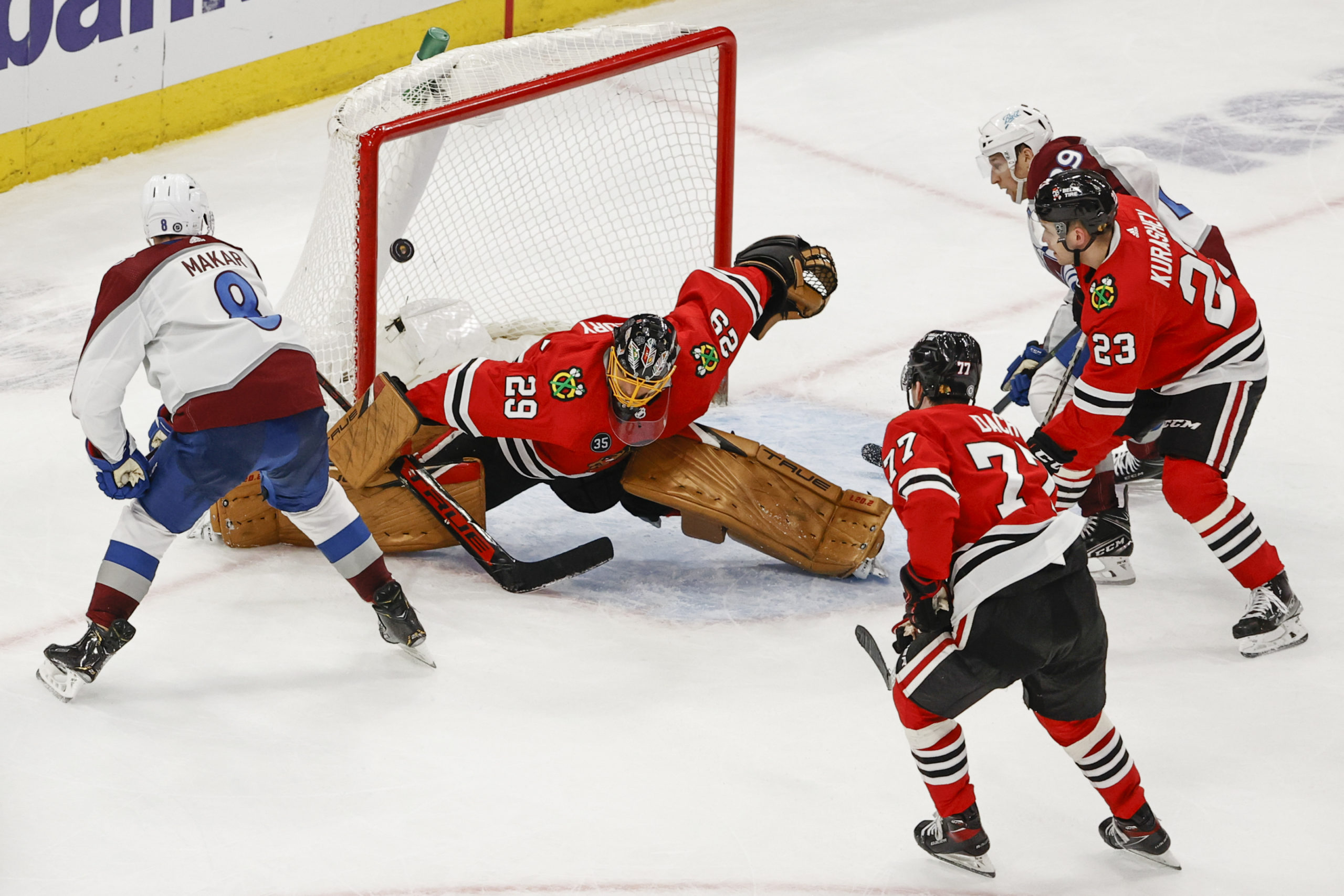
Let’s say the Leafs wanted to look for a goalie at the deadline. Are there better bets than those two out there? The popular names on the trade block (as of right now) are Marc-Andre Fleury, Braden Holtby, Thomas Greiss, and Joonas Korpisalo.
Starting with Fleury, the idea of getting the reigning Vezina winner is a pretty good one, but Fleury contains more multitudes than just that description. In totality, he’s a career .913 goalie, but that’s a career that has lasted (what feels like) 75 years. What is he in the present?
Fleury’s a goaltender with a .913 SV% and +7.74 GSAx over the preceding four seasons (including this one), but one that costs $7 million against the cap. Acquiring Fleury removes the Leafs’ ability to shore up the second pair, as well as their ability to add second-line help. And they would likely need to move Mrazek out, and possibly ask Chicago to retain some of the cap hit. That would be expensive, and it’s not even clear if Fleury – who will have significant control over his destination as a respected veteran – wants to come to Toronto.
Is Fleury a better bet than Mrazek? Probably. Is he a better bet than Campbell? I’m not so sure about that. Obviously, just about anyone is better than the current Jack Campbell, but Campbell’s numbers over the last four seasons are equivalent to Fleury’s. And Fleury is just as up and down as any other goalie, including that memorably-horrific 2012 playoff series against Philadelphia where he posted a rancid -9.63 GSAx in six games.
Fleury’s a good goaltender, but he’s not prime Dominik Hašek, and I am not too interested in giving up a big package that precludes the team’s ability to help any other part of the team for a player I’m not sure is better than Campbell to begin with. Even accounting for this recent horrendous stretch, Campbell’s numbers this season are better than Fleury’s.
How about Braden Holtby? That’s another former Vezina winner and another member of the 31 goalies club I mentioned, but the trendline here is bad. Holtby has a .904 SV% and -13.82 GSAx over his last four seasons, and Campbell’s stats this season are better than Holtby’s.
In Holtby, we’re talking about a player who is a marginal Mrazek replacement, not a guy you really want to ride into the playoffs with as your starter. He’d be cheaper to acquire – costing only $2 million against the cap – but is he an upgrade on Mrazek? This year he is, but the same caveats we discussed about Mrazek apply. Over the last four years, he’s actually a downgrade on Mrazek.
Joonas Korpisalo should be on any NHL team’s “do not acquire” list, but just how much of the league is stuck on the memories of the famous 5OT game against Tampa when Korpisalo made 85 saves on 88 shots? Or when he put up a .956 SV% in four games against the Leafs that same playoff?
Outside of those nine games in the 2020 playoffs, Korpisalo has been a bad NHL goalie for years now. He has a career .903 and has been -8 GSAx or worse in each of the last four regular seasons. He’s clearly below average and worse than both Mrazek and Campbell by a wide margin. Next.
Thomas Greiss is moderately more enticing because he has a career .913 SV%, is in that club of 31 goalies, and he has that incredible 2018-19 season in the window of the last four years, when he was a .927, +11.67 GSAx goalie for the Islanders. That said, since then, Greiss has been more mediocre (.908 and -15.76 cumulatively) so we’re probably talking about a Mrazek replacement here, too – one who may not be better than Mrazek anyway. Right now, Mrazek has better numbers in 2021-22 than Greiss does.
That’s the problem with acquiring a goalie at the trade deadline: the options are either not good or not clearly better than what the team already has. Moreover, the prices are not going to be cheap, and there are teams who clearly need goaltending more than the Leafs.
For example, the Edmonton Oilers have two goalies that have posted .905 and .908 SV% marks over the last four seasons (compared to Toronto’s .918 and .908). The Washington Capitals have two young goalies with career .905 and .911 SV% marks. Those two teams will be willing to pay more for a Fleury-type because they have two goalies that haven’t demonstrated much of a credible track record instead of Toronto’s present situation, which is that of a titanic slump.
I agree that Fleury is the top option on the market. If that’s the case, here are the options facing Kyle Dubas:
- Option A: last four seasons combined, .918 SV% and +8.63 GSAx. This season, .917 SV% and -1.87 GSAx. Costs $1.8 M against the cap and is already on your roster.
- Option B: last four seasons combined, .913 SV% and +7.74 GSAx. This season, .912 SV% and -4.85 GSAx. Costs $7.0 M against the cap and would require significant future assets to acquire.
I don’t really know how you can argue Fleury is a significant upgrade, let alone one that is worth it to cough up the assets it would take to acquire him. Fleury is not a major upgrade over Campbell, and Greiss/Holtby are not major upgrades on Mrazek. They are, at most, marginal upgrades, and in no case are any of them worth spending the assets to acquire them.
Conclusions
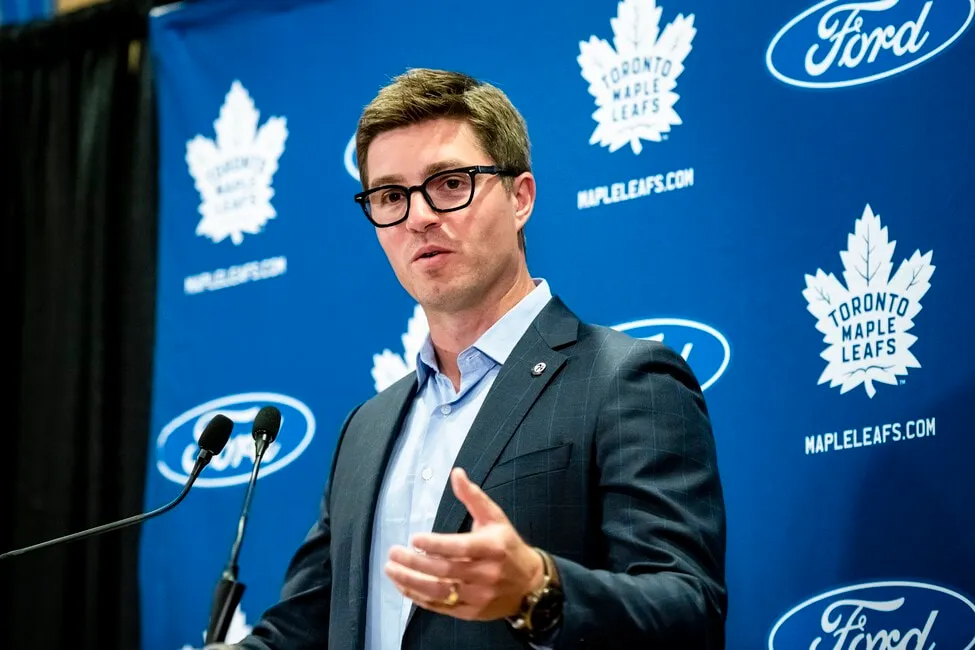
I know it’s an extremely unsatisfactory answer, but I think the Maple Leafs have to ride it out with these two.
Campbell and Mrazek have track records to suggest they’re good NHL goalies. There is a limited list of players who are definitive upgrades on Campbell/Mrazek – names like Juuse Saros, Andrei Vasilevskiy, and Robin Lehner – but none of them are on the market.
The assets and cap space that Toronto wields at the deadline are better spent on players who represent major upgrades to the team – players like Jakob Chychrun or JT Miller, as opposed to marginal upgrades in net that could easily bust knowing goaltending is highly random.
It sounds ridiculous to say, “We have to believe that Jack Campbell will figure it out,” when he got lit up so brutally last Saturday night. However, if we frame it as, “We have to believe that over the next 30 games, Jack Campbell will be more like the .917 goalie he’s been in his 124 game career than the .869 one he’s been over the last 11 games,” it makes much more sense.
The same is true for Petr Mrazek, who is more like a .910 goalie and less like an .895 one.
Goaltending is weird and fickle. It can win your heart and then break it in the span of a couple of weeks. Jack Campbell’s season so far is a stark example of that. All a GM like Kyle Dubas can do is bet on goalies with good track records, and Campbell and Mrazek both have one. No matter how bad the last month-and-a-half has been for both.














